This step by step diy woodworking project is about small workbench plans. This article features detailed instructions for building a small workbench using common materials. This heavy duty table is ideal for small shops or garages, as it can be moved easily. In addition, the workbench features significant storage space. Take a look over the rest of our woodworking plans, if you want to get more building inspiration.
When buying the lumber, you should select the planks with great care, making sure they are straight and without any visible flaws (cracks, knots, twists, decay). Investing in cedar or other weather resistant lumber is a good idea, as it will pay off on the long run. Use a spirit level to plumb and align the components, before inserting the galvanized screws, otherwise the project won’t have a symmetrical look. If you have all the materials and tools required for the project, you could get the job done in about a day. See all my Premium Plans HERE.
Projects made from these plans
Small Workbench Plans
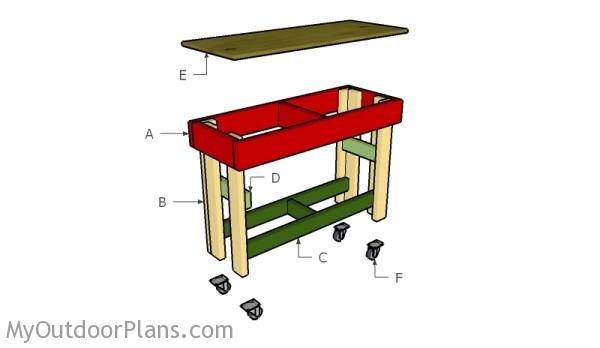
Building a small workbench
Cut & Shopping Lists
- A – 3 pieces of 2×6 lumber – 15 1/2″ long, 2 pieces – 48″ long FRAME
- B – 8 pieces of 2×4 lumber – 32″ long LEGS
- C – 2 pieces of 2×4 lumber – 42″ long, 1 piece – 9 1/2″ long LOWER BRACES
- D – 2 pieces of 2×4 lumber – 12 1/2″ long SIDE SUPPORTS
- E – 1 piece of 3/4″ plywood – 18 1/2″x48″ long TABLETOP
- F – 4 pieces of 3″ casters CASTERS
- 5 pieces of 2×4 lumber – 8′
- 2 pieces of 2×6 lumber – 8′
- 1 piece of 3/4″ plywood – 2’x4′
- 4 pieces of 3″ caster wheel
- 2 1/2″ screws
- 1 1/4″ screws
- wood putty, wood stain
- wood glue, stain/paint
Tools
![]() Hammer, Tape measure, Framing square, Level
Hammer, Tape measure, Framing square, Level
![]() Miter saw, Drill machinery, Screwdriver, Sander
Miter saw, Drill machinery, Screwdriver, Sander
Time
Related
Building a workbench
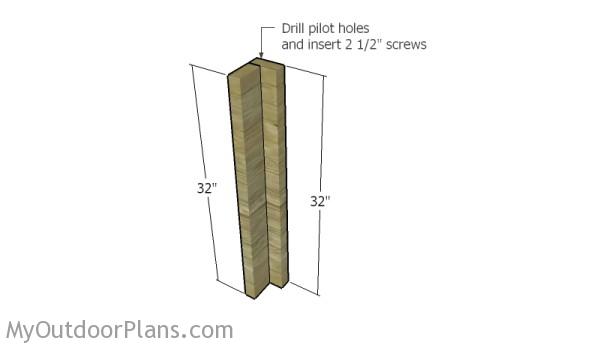
Building the legs
The first step of the project is to build the legs for the workbench. Cut the components from 2×4 lumber. Drill pilot holes along the vertical edge of one beams and insert 2 1/2″ screws into the perpendicular component. Add glue to the joint to enhance the rigidity of the unit.
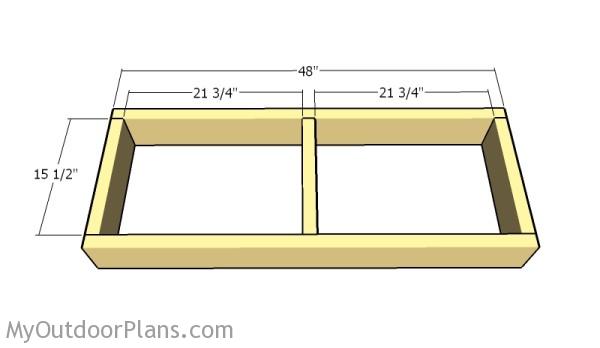
Building the tabletop frame
The next step of the project is to build the top frame for the tabletop. Cut the components from 2×6 lumber. Align the components, drill pilot holes and lock them together with 2 1/2″ screws. Make sure the corners are square and the edges flush.

Assembling the workbench
Fit the legs to the frame, making sure the corners are square. Plumb the legs with a spirit level and make sure the top frame is horizontal.
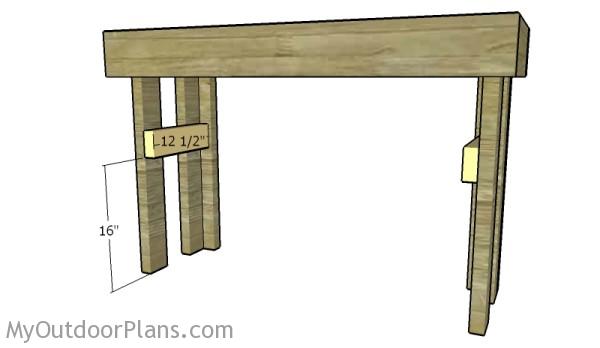
Fitting the side supports
Fit the 2×4 supports to the sides of the workbench, as shown in the diagram. Drill pilot holes through the braces and insert 2 1/2″ screws into the legs.
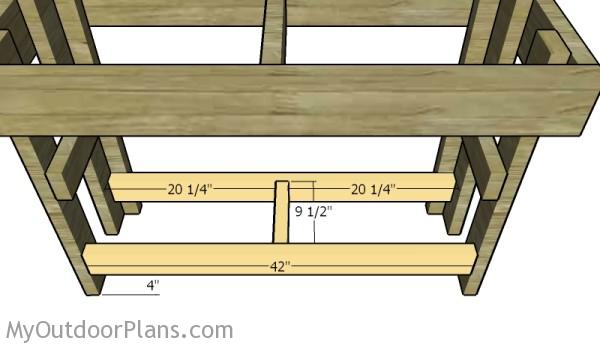
Fitting the bottom supports
In order to enhance the rigidity of the frame, you need to attach 2×4 braces to the bottom of the workbench. Cut the components from 2×4 lumber and lock them into place with 2 1/2″ screws. Drill pilot holes to prevent the wood from splitting.

Attaching the tabletop
Use 3/4″ plywood for the tabletop. Align the edges so that they are flush with the frame. Insert 1 1/4″ screws or nails to lock the tabletop into place.
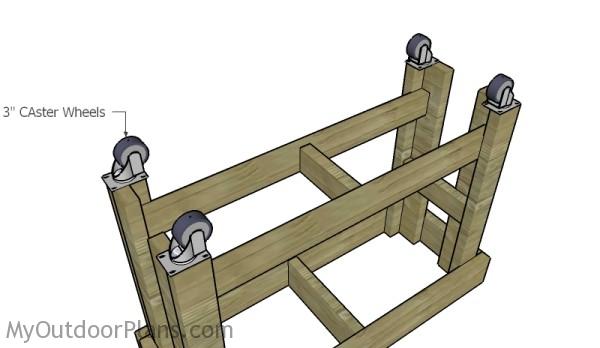
Fitting the caster wheels
Attach the 3″ caster wheels to the bottom of the workbench. Use 1 1/4″ screws to lock the casters to the legs, as shown in the diagram. The casters will make moving the workbench a lot easier.
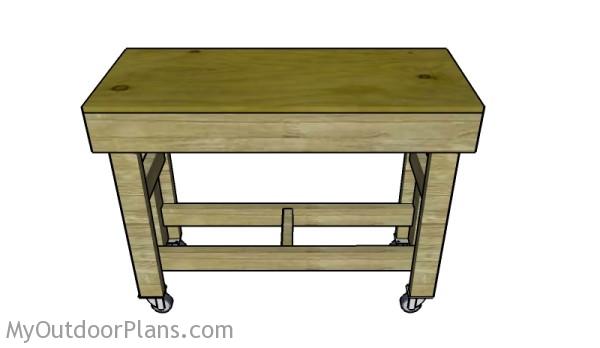
Narrow workbench plans
You can easily add hooks to the sides of the workbench to hand tools and to use the space efficiently. Moreover, you can also add a 3/4″ plywood shelf to the lower frame.
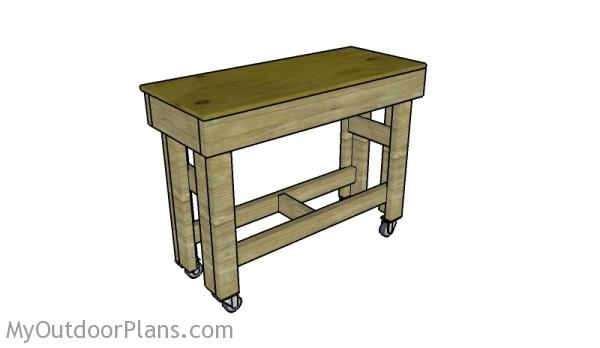
Small Workbench Plans
Fill the holes with wood putty and let them dry out for a few hours. Smooth the surface with 100-220 grit sandpaper and remove the residues with a damp cloth.
Top Tip: Apply a few coats of paint or stain to the components, to enhance the look of the project.
This woodworking project was about small workbench plans free. If you want to see more outdoor plans, check out the rest of our step by step projects and follow the instructions to obtain a professional result.
